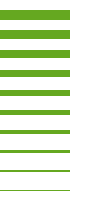https://doi.io-warnemuende.de/10.12754/data-2022-0002
doi:10.12754/data-2022-0002
© Author(s) 2022. This work is distributed
under "CC-BY 4.0 License"
Data and processing scripts for the article “The role of boundary mixing for diapycnal oxygen fluxes in a stratified marine system, Holtermann et al., Geophysical Research Letters, 2022"
Contributor(s): Holtermann, Peter [Researcher]
Abstract. Insufficient diapycnal oxygen transport through the halocline is the key reason for the anoxic conditions typically observed in the deeper parts of the Baltic Sea. The variability of turbulent oxygen fluxes through the halocline was investigated seasonally and in space during three cruises (summer, fall, winter). Turbulence dissipation rates and oxygen fluxes showed a pronounced seasonal pattern, with the lowest values during summer. At the basin boundaries, halocline oxygen fluxes increased by an order of magnitude as a result of boundary mixing. A simple box model, distinguishing between interior, intermediate, and boundary regions, was used to extrapolate the locally observed fluxes to the central Baltic Sea. The boundary area, covering less than 23% of the total basin area, contributed more than 80% of the basin-scale oxygen transport through the halocline. According to this model, the annual oxygen flux through the halocline is of the order of 20–28 Gmol per year.
